Art World
From the Rembrandt in the Rec Room to a Degas on a Bus, These 10 Priceless Artworks Were Found in the Unlikeliest Places
Sometimes, you just have to know where to look.

Sometimes, you just have to know where to look.

Katie White

Who doesn’t dream of learning that some family tchotchke is in fact a priceless treasure? Or of finding a diamond in the rough at some out-of-the-way yard sale? The rags-to-riches stories of artworks discovered in shadowy corners are not as common as we’d like. But for a lucky few, the dream can become a reality when a rummage through the attic ends up a historical windfall.
For all the true believers out there with their fingers crossed, here are 10 of our favorite stories of artwork found in unexpected places.
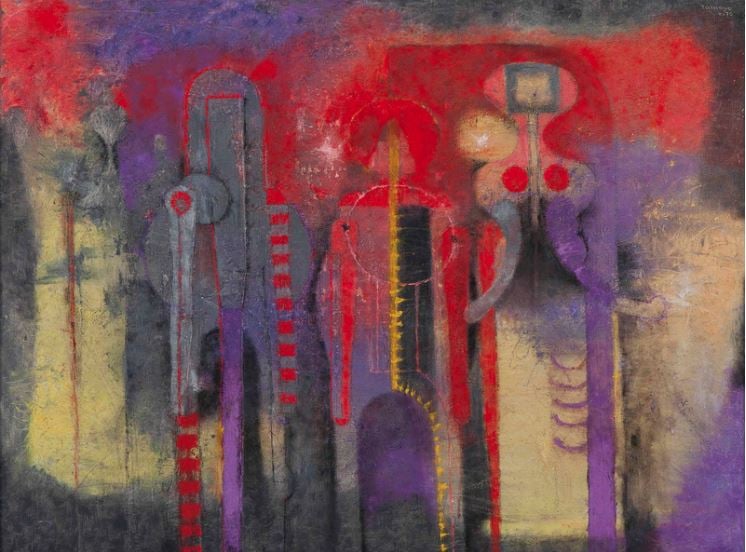
Rufino Tamayo, Tres Personajes (1970). Courtesy of Christie’s Auction House.
Rufino Tamayo is among the great masters of Mexican Modernism, but his artwork, it turns out, is not for everyone. While out on a morning stroll through Manhattan’s Upper West Side in 2003, a woman by the name of Elizabeth Gibson spotted a brightly colored abstract painting set out on the sidewalk with the trash. Though no expert on art, Gibson was taken by the unusual canvas and plucked from its impending garbage-truck demise.
Four years later, Gibson learned that the work she had salvaged was actually Tamayo’s Tres Personajes, painted in 1970. The work had been stolen from a Houston collector and his wife in 1987, and Gibson dutifully returned the work to its rightful owner. But her good deed did not go unnoticed; she received a $15,000 award, and a share of the profits when it sold at auction at Sotheby’s for $1,049,000 in October 2007. In 2015, Tres Personajes sold again at Christie’s for $1,325,000.
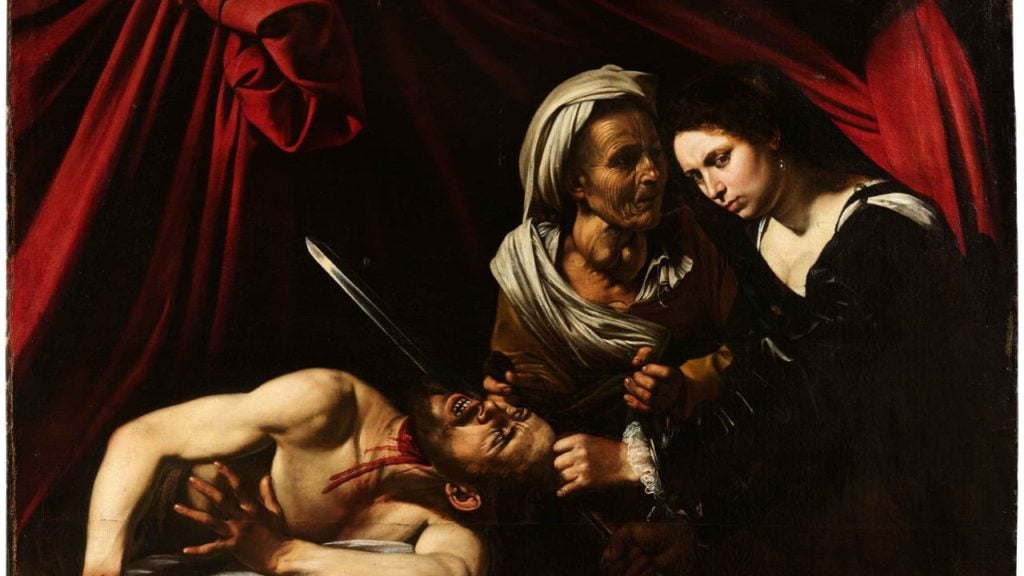
Caravaggio, Judith Beheading Holofernes (circa 1607). Courtesy of Cabinet Turquin.
Many experts were incredulous, when in 2014, a long-lost second version of Judith Beheading Holofernes by the Baroque master Caravaggio was supposedly discovered in a Toulouse attic.
One depiction of the dramatic scene of vengeance is a highlight at the National Gallery of Ancient Art at Palazzo Barberini in Rome, but the whereabouts of the second version, painted in Naples, had been unknown since the early 1600s. The attribution sent shock waves through scholarly circles; an art historian even resigned from Milan’s Pinacoteca di Brera when the work was shown with an asterisked attribution in 2016. The tumultuous scene is now coming to the market and will be offered at Toulouse auction house Cabinet Turquin on June 27 with a pre-sale high estimate of $171 million.
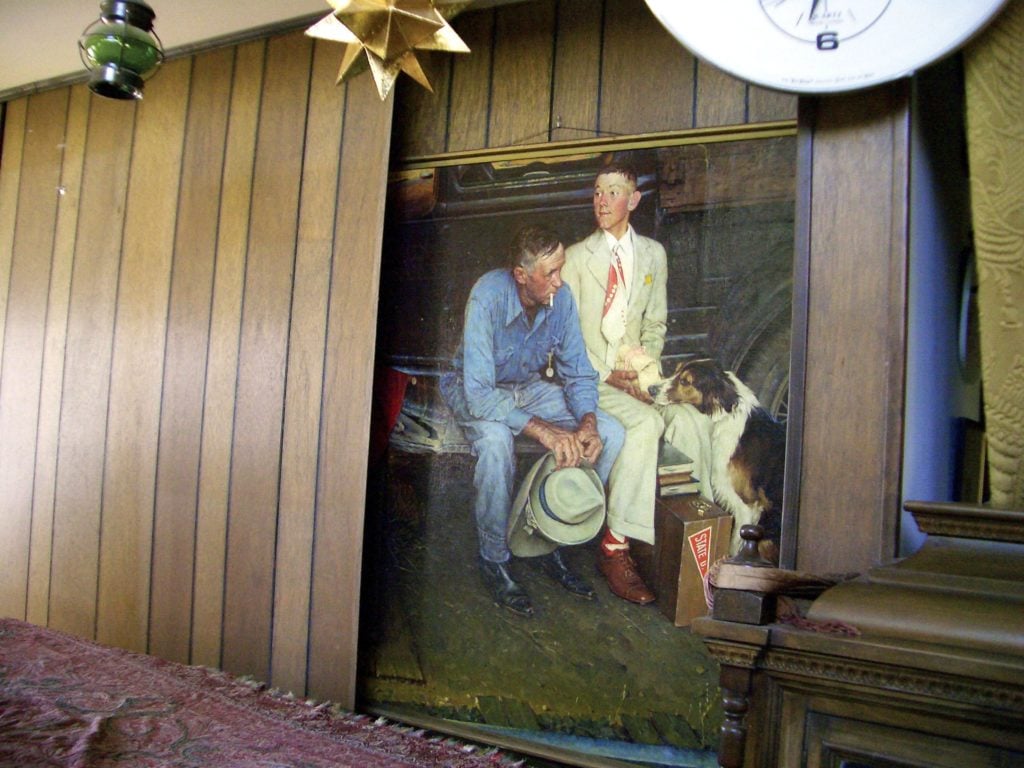
Norman Rockwell’s Breaking Home Ties sits behind the fake wall where it was found by the owners’ children. Courtesy of Joe Raedle/Getty Images.
Maybe it’s time to start knocking on walls and pulling on wall sconces. In the spring of 2005, Norman Rockwell’s iconic painting Breaking Home Ties was discovered behind a false wall in an Arlington, Vermont, home. The heartwarming work is one of the artist’s most beloved, showing a fresh-faced, college-bound boy seated beside his hardscrabble father and loyal dog. The bitter-sweet image graced the front of The Saturday Evening Post on September 25, 1954, becoming one of its most popular covers.
Owned by cartoonist Don Trachte, Jr., the work was stumbled upon after his death by his two sons after they found a strange gap in wood paneling in his home. When pushed, the panel opened to reveal the hidden painting. It is believed that Trachte had stowed the work away in an attempt to hide it from his ex-wife during an acrimonious divorce. When Breaking Home Ties was auctioned at Sotheby’s in 2006 it achieved $15.4 million—then a new high for Rockwell at auction.

The Golden Buddha at Wat Traimit, Bangkok, Thailand. Courtesy of Isa Foltin/Getty Images.
Nicknamed “The Golden Buddha,” Phra Phuttha Maha Suwan Patimakon is the world’s largest solid gold statue, measuring 10 feet tall, 12 feet wide, and weighing in at 5.5 tons. Though now counted among Thailand’s wonders, for many years the colossal statue was largely forgotten, and its precious metal composition was entirely obscured. Over its lifetime (the statue was likely cast in the Sukhothai period, sometime between the 1230s and 1430s), the sculpture had been covered in plaster mixed with glass, likely in an attempt to deter thieves during the Burmese–Siamese War of the 1760s.
Over the ensuing centuries, as political, economic, and religious tides fluctuated, the disguised Buddha was moved from its home in Ayutthaya north of Bangkok to the capital, and then to various temples throughout the city, at one point being stored under a tin roof. In May 1955, the statue was once again being relocated when workers dropped the Buddha. What might have been a tragedy turned out to be a blessing, as a little glimmer of gold shone through the sculpture’s crack. The exterior was carefully removed to reveal the sculpture’s solid Midas core. Now enshrined at Bangkok’s temple of Wat Traimit, many Buddhists believe the statue to be miraculous.
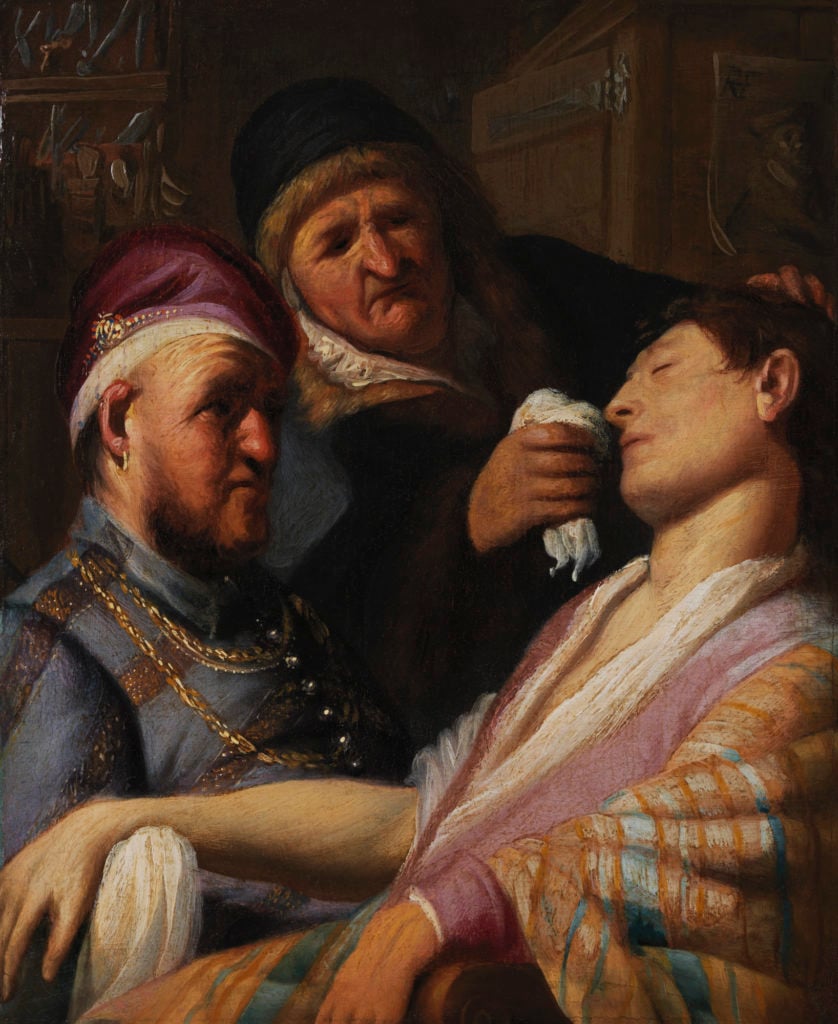
Rembrandt Harmensz van Rijn, The Unconscious Patient (An Allegory of the Sense of Smell) (circa 1624). Courtesy of the Leiden Collection, New York.
The old adage “mother knows best” certainly proved true for three New Jersey brothers. Ned, Roger, and Steven Landau had long joked about an unusual, even creepy painting that hung in their mother’s dining room. Handed down from their grandmother, the dark painting showed two men passing salts beneath the nose of an unconscious woman. When the Landaus’ mother passed away, they sold most of her belongings in a yard sale, but fortuitously decided to hang on to the painting, storing it under a basement ping-pong table.
In 2015, the Landaus brought the painting to local auctioneer Nye & Company, where they set an opening bid of $250 for the work, believing it to be a 19th-century painting. When the auction opened and bidders from around the world called in exceedingly exorbitant prices, the brothers realized something was amiss. The unsettling painting, it turned out, was one of five works by Rembrandt in a series on the senses. Many scholars had been on the hunt for the work for their lifetimes, and the work sold to a French bidder for just shy of a million dollars. So how did it wind up in a New Jersey dining room? The brothers believe their grandfather unwittingly purchased it after the Great Depression.
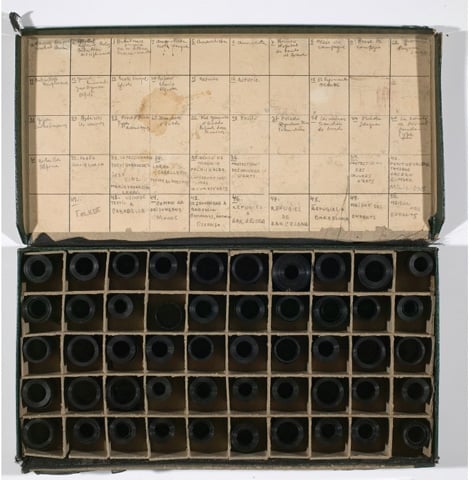
The green box of the “Mexican Suitcase.” © International Center of Photography.
Imagine this: a curator comes to work one day to find boxes of never-before-seen film by some of the 20th-century’s greatest photographers right at her museum’s doorstep. That’s exactly what happened in December 2007 when 4,500 35mm negatives taken by three of the great Modern war photographers—Robert Capa, Gerda Taro, and Chim (David Seymour)—arrived at the International Center of Photography in New York.
The negatives of the Spanish Civil War had been missing since 1939, when they had vanished after Capa, fleeing the Nazi invasion of France, passed them haphazardly to his darkroom manager. They somehow passed into the hands of the Mexican ambassador to Vichy, France, who brought them to Mexico City where the film lay undiscovered until his nephew realized the significance of the material. The film includes images of anti-Franco protests and scenes of the devastation of war, but also previously unknown photographs of Federico Garcia Lorca and Ernest Hemingway.

A still from Stuart Little (1999) with Róbert Berény’s Sleeping Lady with Black Vase in the background.
An art historian never rests. During the Christmas holidays in 2009, Gergely Barki, a researcher at the Hungarian National Gallery in Budapest, and his young daughter settled in to watch Stuart Little (1999), the classic children’s tale of a mouse adopted into a wealthy family. Barki never could have expected his surprise when, hanging over a mantelpiece in one scene, he spotted a painting was sure he recognized: Sleeping Lady with Black Vase, a work by Hungarian artist Robert Bereny that had last been seen in public in 1928.
Inspired and curious, Barki set off on a fact-finding mission, writing letters to Sony Pictures and Columbia Pictures. Nearly two years later, he received a response from the film’s set designer. She had picked up the painting from a Pasadena antiques store for $500, and now had it hanging in her living room. Though no one knows how its across-the-world journey came to pass, Sleeping Lady with Black Vase was authenticated and eventually repatriated to Hungary.
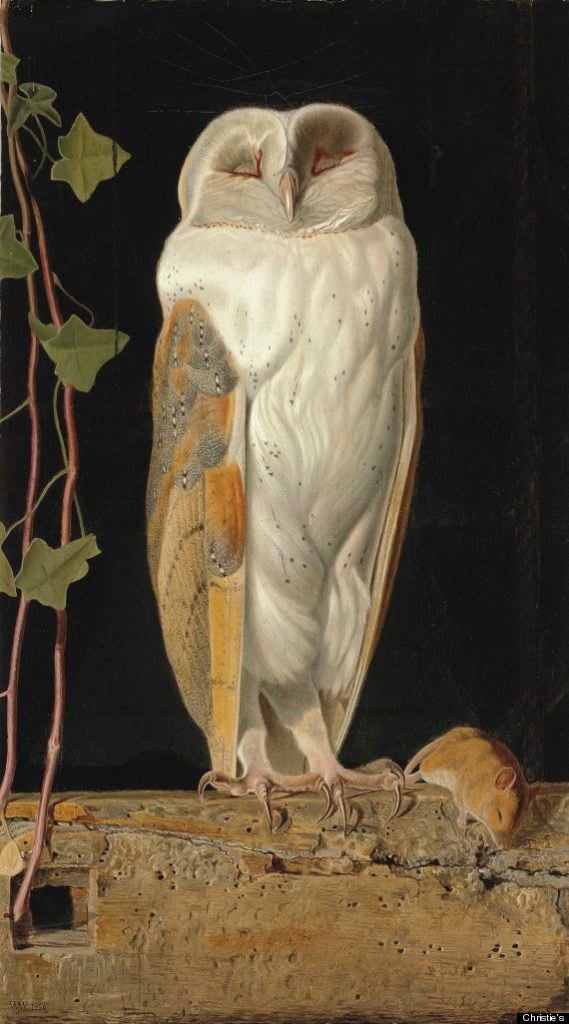
William James Webbe, The White Owl, “Alone and warming his five wits, The white owl in the belfry sits” (1856). Courtesy of Christie’s Auction House.
You never know when a burst pipe might be a blessing in disguise. In the 2000s, Jane Cordery, a school teacher in Hampshire, England, was clearing a space in her attic for a plumber when she spotted a small painting of a white owl. Struck by the delicate, refined brushstrokes, Cordery emailed a photograph of the work to Christie’s auction house on a whim. Nineteenth-century specialists soon realized they had something special on their hands.
The painting was The White Owl, a work by Pre-Raphaelite William James Webbe, which had once drawn the attention of the illustrious art historian John Ruskin. When the painting hit the auction block at Christie’s in 2012, the ornate work far out-stripped its pre-sale estimate of £70,000, selling for the exorbitant price of £589,250. But from whence did it appear? Cordery’s partner believes he received the work as a gift from his mother.

Edgar Degas, The Chorus Singers (1877). Courtesy of Wikimedia Commons.
Better start checking for more than gum on your bus seat. In 2018, customs officers discovered a Degas pastel in the luggage compartment on a bus just outside of Paris during a routine search. The painting, The Chorus Singers (1877), was taken under mysterious circumstances from a museum in Marseille in 2009. With no signs of a break-in, the painting had simply been removed from the wall.
No leads materialized during an investigation of the work’s whereabouts, and the festive scene of singers on stage was believed to be lost. It is now part of the collection of the Musee d’Orsay.
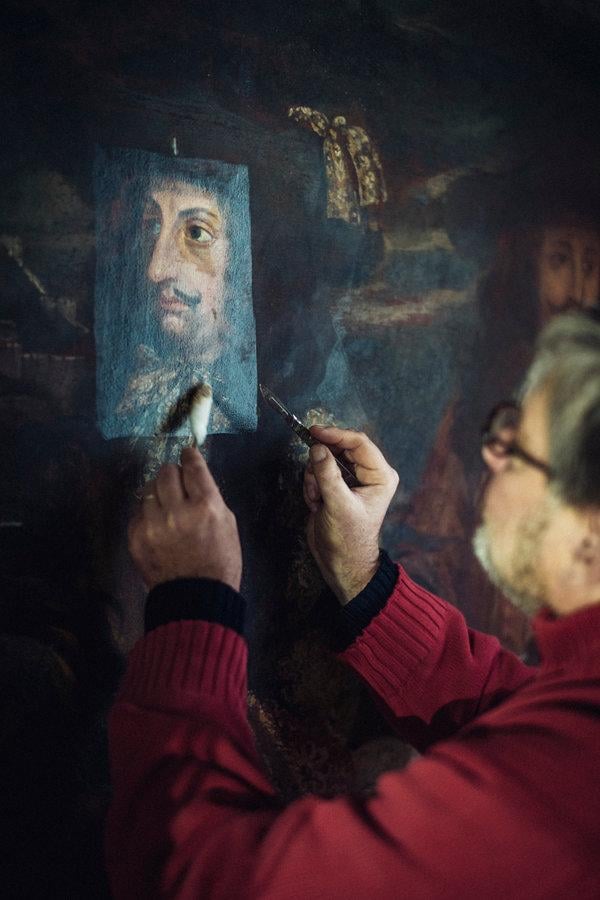
The restoration in progress. Image courtesy Benoît Janson / Nouvelle Tendance.
Construction surprises are rarely pleasant. Earlier this year, when fashion house Oscar de la Renta was just weeks from opening the expansion of their Paris boutique, Alex Bolen, the chief executive, received a call that there had been a “discovery.” Expecting the worst, Bolen headed for Paris. When he arrived, what he saw took his breath away. Glued to a wall was a 10-by-20-foot oil painting of ornately bedizened courtiers in a parade to Jerusalem. Workmen had discovered the painting while taking down a particle-board wall in what had previously been an insurance brokerage office. Construction immediately halted and experts were brought in.
The painting, researchers soon learned, was a 1674 work by Arnould de Vuez, a Versailles Court painter and peer of Charles Le Brun. A book from 1900 identified the painting as a depiction of Charles-Marie-François Olier, an ambassador of Louis XIV. How it got onto the wall of the 18th-century building no one knows, but it was agreed that removing the work would be too risky. For now, it is being restored on site, and will become the centerpiece of the new store.